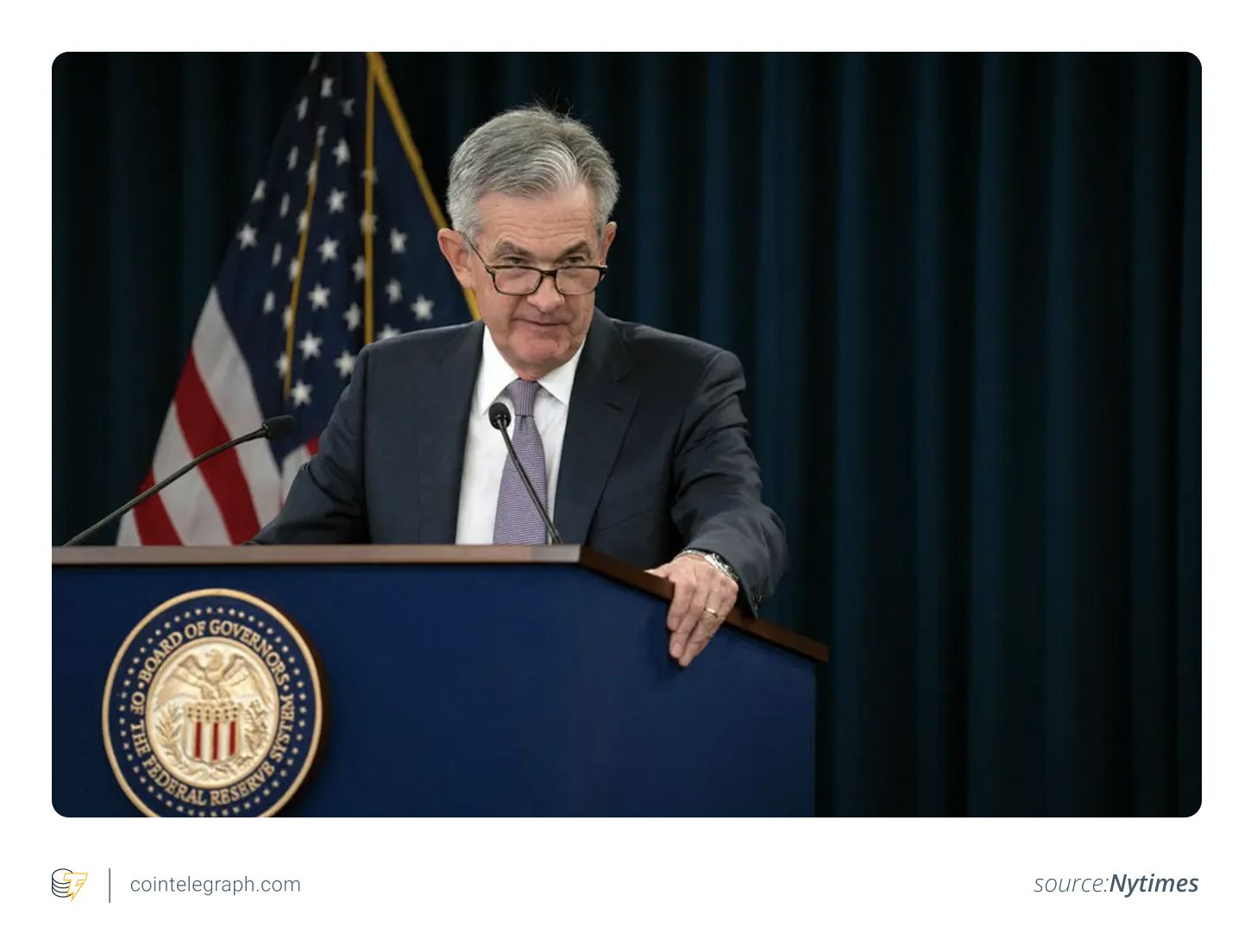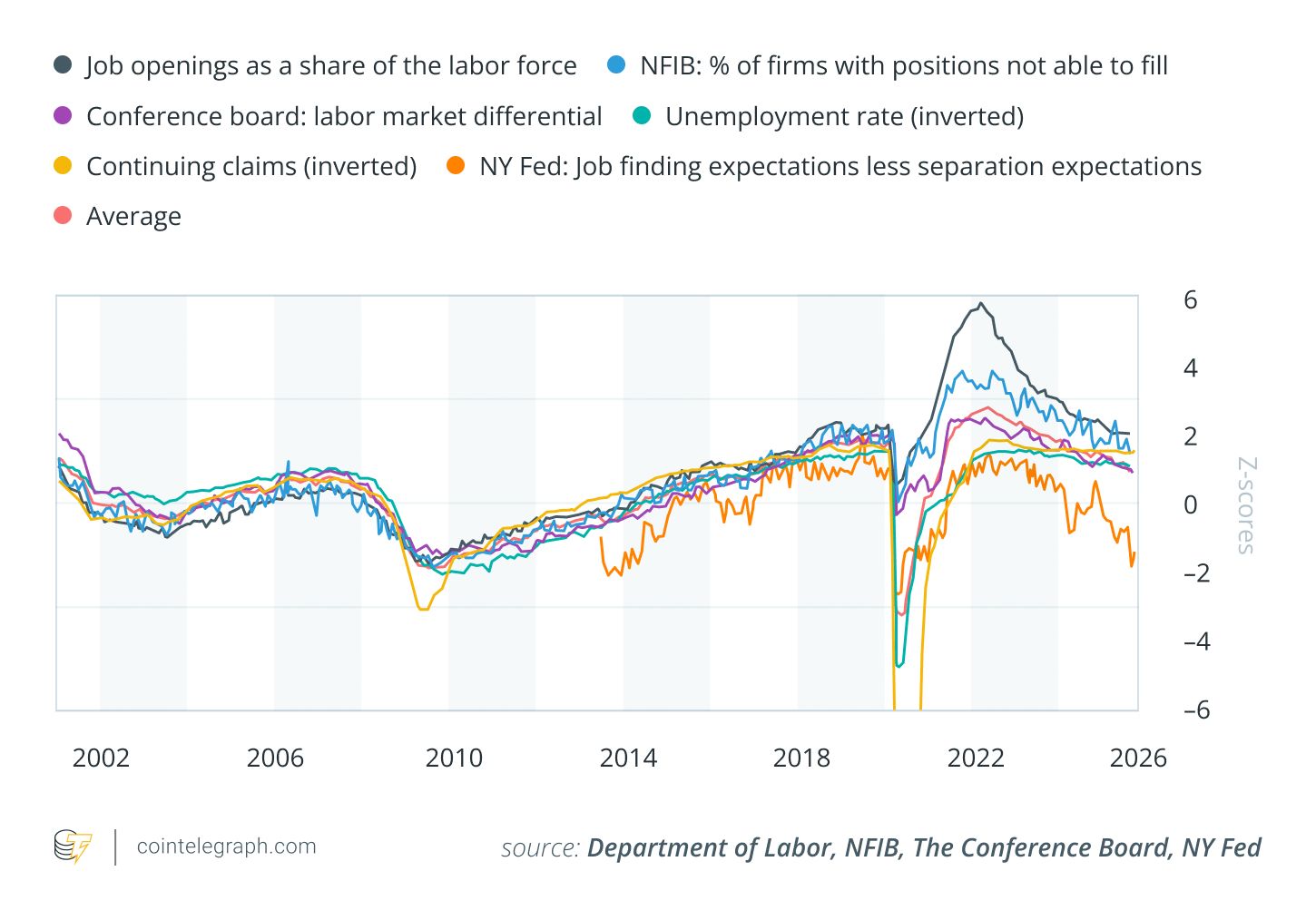Key takeaways
The Fed’s Dec. 9-10 meeting carries unusual weight as markets wait to see whether another rate cut will arrive before Christmas, shaping bonds, equities and crypto.
After two cuts in 2025, rates now sit at 3.75%-4.00%. Labor weakness and softer inflation support further easing, but officials remain divided because inflation risks have not fully cleared.
A cooling job market, easing inflation and the end of quantitative tightening could justify another reduction and align with year-end liquidity needs.
Sticky inflation, gaps in economic data caused by the government shutdown and a divided Fed may push policymakers to keep rates unchanged this December.
When the US Federal Reserve meets on Dec. 9-10 to decide on interest rates, it will not be just another routine gathering. Markets are watching closely to see what direction policymakers choose. Will the Fed cut rates again before the holidays? A pre-Christmas Eve reduction could send waves through bonds, stocks, credit markets and crypto.
This article explains why the Fed’s pre-Christmas meeting is significant and outlines the factors supporting or opposing a potential rate cut. It also highlights what to watch in the coming weeks and how a Fed move could affect crypto and other financial markets.
The background of a December rate cut
Central banks typically cut rates when inflation is easing, economic growth slows or financial conditions become too tight. In late October, the Federal Reserve lowered rates by 25 basis points, setting the federal funds target range at 3.75%-4.00%, its lowest level since 2022. The move followed another 25-basis-point cut in September 2025, making it the Fed’s second rate reduction of the year.
The move came amid clear signs of a cooling labor market. October recorded one of the worst monthly layoff totals in more than two decades, according to multiple labor-market reports , reinforcing concerns about weakening job conditions. The Fed’s October statement echoed this trend, noting that risks to employment had increased even as inflation remained somewhat elevated.
At a press conference, Fed Chair Jerome Powell stressed that a December cut is “not a foregone conclusion.” Yet economists at Goldman Sachs still expect a cut, pointing to clear signs of labor market weakness. Fed officials remain divided, with some emphasizing inflation risks and the limited room for further easing.
A December rate cut is possible, but it is not guaranteed.

Factors supporting a potential rate cut
There are several reasons the Fed may decide to cut rates:
Cooling labor market: Private sector data shows softer hiring, rising layoffs and a slight increase in unemployment.
Moderating inflation: Inflation is still above target but continues to trend lower, giving the Fed more flexibility to ease policy.
Ending quantitative tightening: The Fed has announced it will stop reducing the size of its balance sheet beginning Dec. 1.
Pre-holiday timing: A rate cut would align with year-end liquidity needs and help set expectations for 2026.

Arguments for the Fed to postpone action
Several factors suggest the Fed may delay a rate cut in the near future:
Sticky inflation: According to the Fed’s latest statement , the inflation rate remains “somewhat elevated.”
Data vacuum: The US government shutdown has delayed key employment and inflation reports, making policy assessments more difficult.
Committee division: Federal Reserve officials are split on the appropriate path forward, which encourages a more cautious approach.
Limited room for easing: After multiple cuts this year, some analysts argue that policy is already close to a neutral level.
Did you know? In March 2020, the Fed cut interest rates to near zero to respond to the COVID-19 crisis. It lowered rates by a total of 1.5 percentage points across its meetings on March 3 and March 15.
What to monitor before December
These factors are likely to shape the Fed’s upcoming policy decision on rate cuts:
Nonfarm payrolls and unemployment: Is the job market continuing to slow?
Inflation data: Any unexpected rise in inflation will reduce expectations for policy easing.
Financial conditions and market signals: Are credit spreads widening, and is overall market liquidity tightening?
Fed communications: Differences of opinion within the Federal Open Market Committee (FOMC) may influence the outcome.
External shocks: Trade developments, geopolitical risks or sudden supply disruptions could shift the Fed’s approach.
Did you know? US stocks have historically returned about 11% in the 12 months after the Fed begins cutting rates.
How a Federal Reserve cut may impact crypto
Fed rate cuts increase global liquidity and often push investors toward riskier assets like crypto in search of higher returns. Bitcoin ( BTC ) and Ether ( ETH ) tend to benefit from stronger risk appetite and rising institutional inflows. Lower decentralized finance (DeFi) borrowing rates also encourage more leverage and trading activity. Stablecoins may see greater use in payments, although their yield advantage narrows when rates fall.
However, if a rate cut is interpreted as a signal of recession, crypto may experience equity-like volatility. Markets might see an initial boost from easier liquidity, followed by a pullback driven by broader macro concerns. If global financial conditions loosen instead, the environment could support further crypto demand.
Lower borrowing costs make it easier for people and institutions to take investment risks, which can draw more interest toward digital assets. As more money flows into the sector, crypto companies can build better tools and services, helping the industry connect more smoothly with the rest of the financial system.
Did you know? When the Fed cuts rates, short-term bond yields usually fall first, creating opportunities for traders who track movements in the yield curve.
Consequences of a Fed rate cut on other financial sectors
Here is a look at the potential effects on major asset classes if the Fed cuts interest rates:
Bonds and yields: Short-term yields will likely decline as markets adjust their expectations. The yield curve may steepen if long-term yields remain stabler than short-term ones, which can signal confidence in future growth. If the cut is viewed as a sign of recession risk, long-term yields may fall as well, resulting in a flattening or even an inversion of the curve.
US dollar and global FX: A rate cut generally weakens the dollar because interest rate differentials narrow. This often supports emerging markets and commodity-exporting countries. If the cut is driven by concerns about economic growth, safe-haven demand may temporarily push the dollar higher.
Equities: A pre-Christmas Eve rate cut could spark a rally in US stocks if investors see it as a sign of confidence in a soft landing. A soft landing refers to cooling inflation alongside a stable labor market. If the cut is motivated by growth worries instead, corporate earnings may come under pressure, and defensive sectors could outperform cyclical ones.


